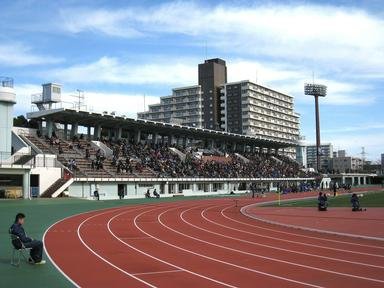Quiz Answer Key and Fun Facts
1. At the World Athletic Championships in Tokyo 1991, Mike Powell (USA) set a new world record with a jump of 8.95 meters. In 1950, this record was held by Jesse Owens (USA). How far did Jesse Owens jump?
2. In Spain in 1993, Javier Sotomayor (Cuba) cleared a high jump of 2.45 meters. The record in 1950 was held by Lester Steers (USA) who had jumped over the bar at what height?
3. In the 10,000 meters in 2006, Kenenisa Bekele (Ethiopia) ran this distance in Zurich to set a new world record of 26 minutes 17 seconds. In 1950, the great Checkoslavakian athlete, Emil Zatopek, was the world record holder. What was his time for the event?
4. At the 1995 World Championships in Gothenburg, Sweden, the Ukrainian Inessa Kravets set a world record of 15.50 meters. How far had Rie Yamaguchi of Japan hopped, skipped, and jumped to be the 1950 record holder?
5. In June 1987, the Soviet shot putter Natalia Lisovskaya set a new world record of 22.63 meters. Another Russian, KlavdiYa Tochonova, held the record halfway through the 20th century. How far did she put the shot?
6. The Men's 100 meter freestyle is the glamour event, and in 2008 Eamon Sullivan of Australia set a new World and Olympic record of 47.05 seconds at the Beijing Olympics. Alan Ford (USA) was the record holder in 1950. How fast did he swim 2 lengths of the pool?
7. One swimming record set at the 2008 Olympics was the Women's 800 meter freestyle. Rebecca Adlington of Great Britain set a mark of 8 minutes 14 seconds. In 1950, the record was held by Ragnhild Hveger of Denmark. How long did the Danish swimmer take to complete 800 meters?
8. At Stuttgart, Germany, in 1986 the Russian Yuriy Sedykh launched the hammer 86.74 meters. Imre Nemeth of Hungary had held the record 36 years earlier. How far did he throw the hammer?
9. In July 1994, the Ukrainian Sergey Bubka pole vaulted 6.14 meters in Sestriere, Italy. The highest clearance before 1950 was by the American Cornelius Warmerdam. How high was that?
10. In the men's marathon, Haile Gebreselassie of Ethiopia ran the 2008 Berlin marathon in a time of 2 hours 3 minutes 59 seconds. In 1950, the South Korean Suh Yun-Bok's time from the 1947 Boston marathon was still the one to beat. What was his time?
Source: Author
patricck
This quiz was reviewed by FunTrivia editor
Nightmare before going online.
Any errors found in FunTrivia content are routinely corrected through our feedback system.
